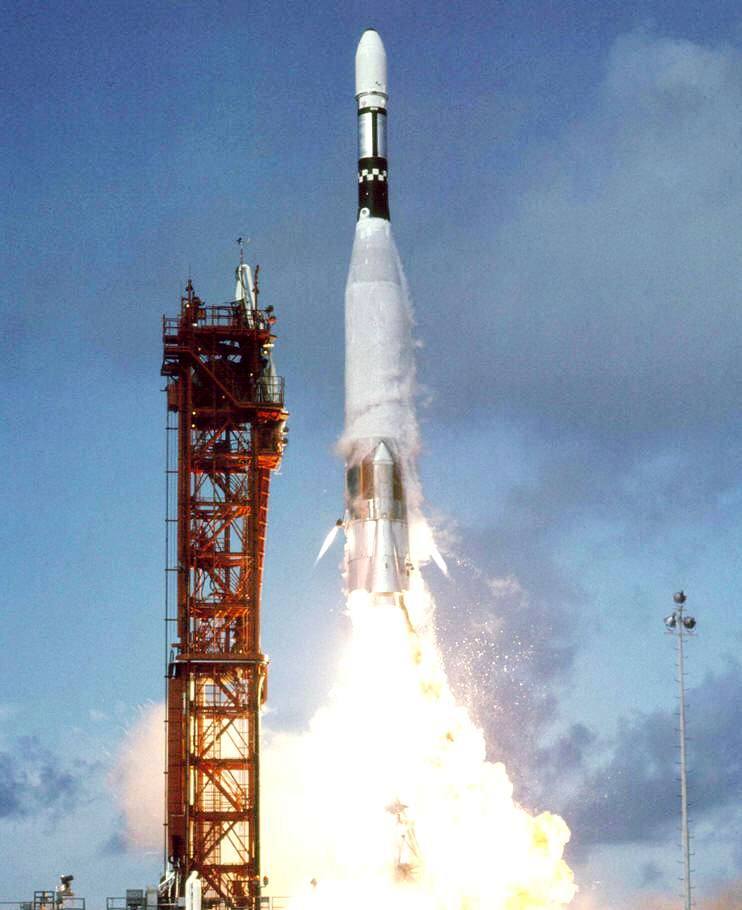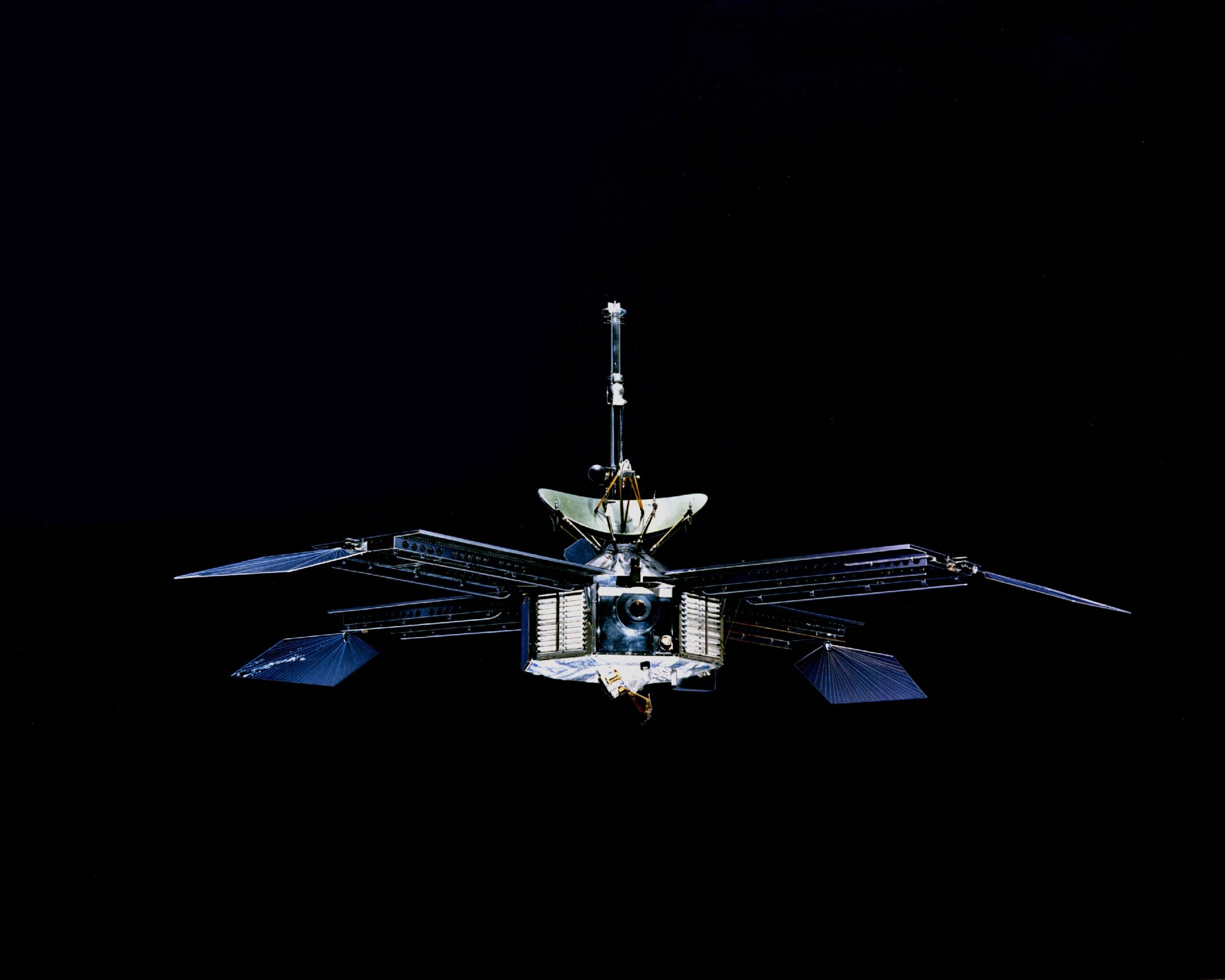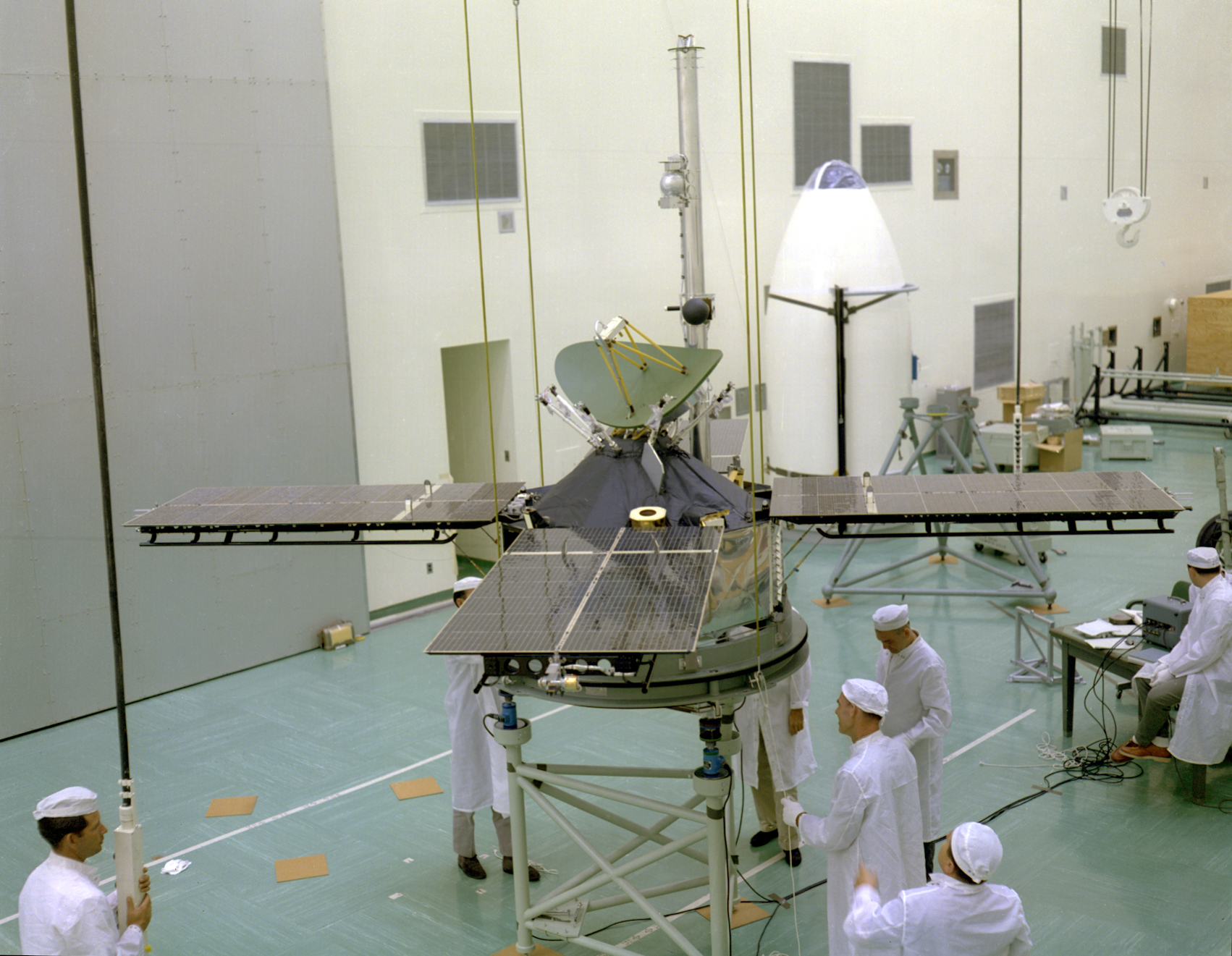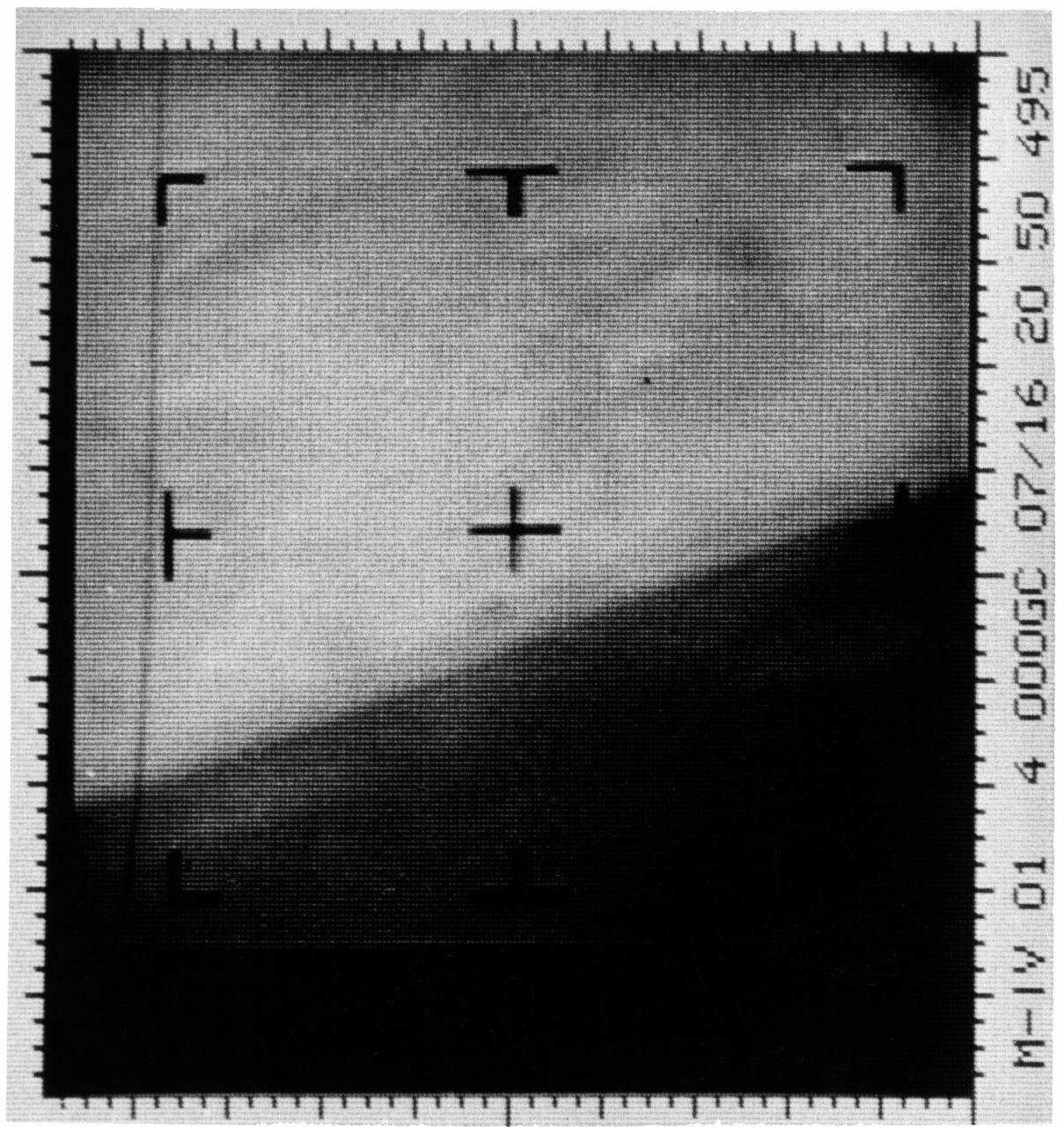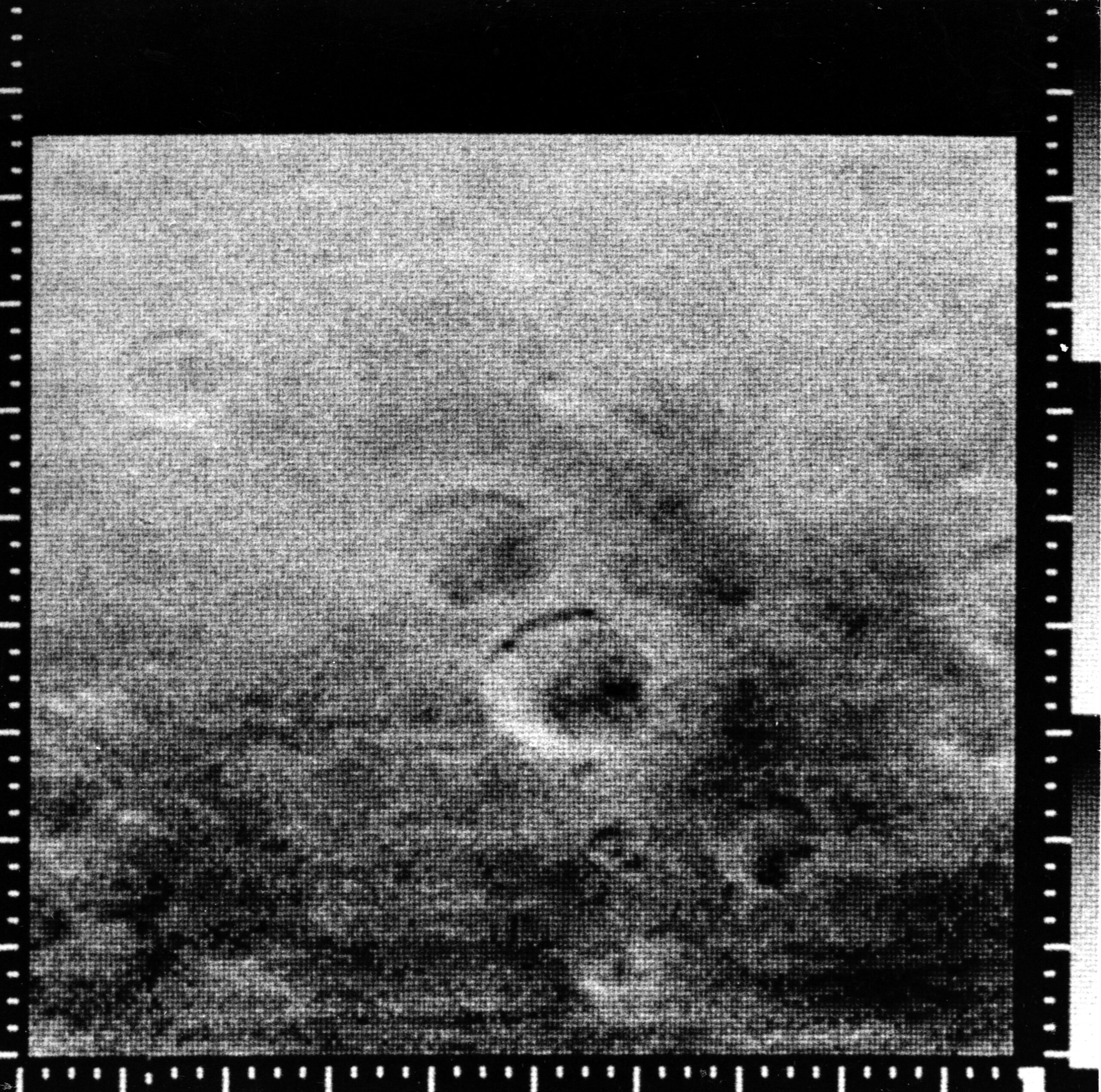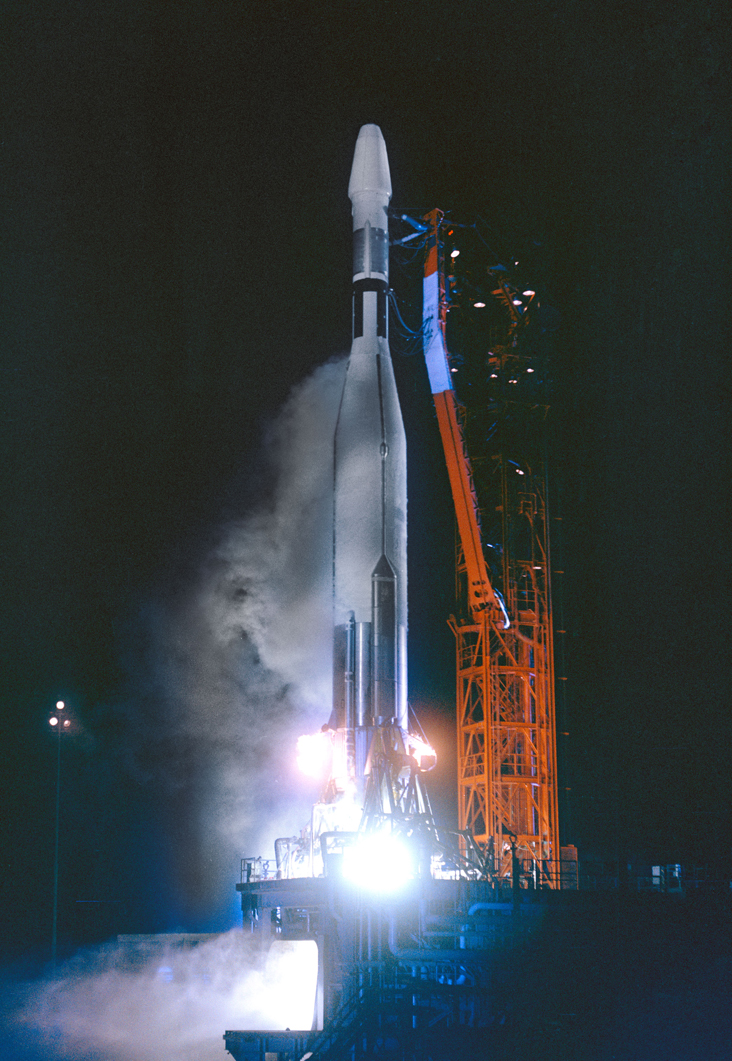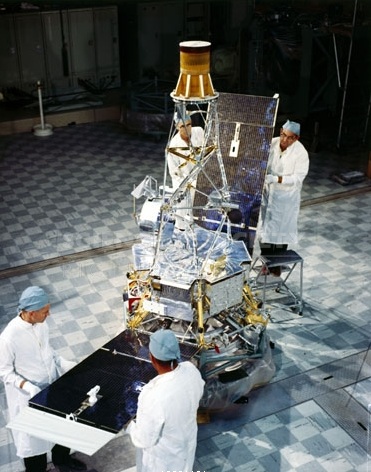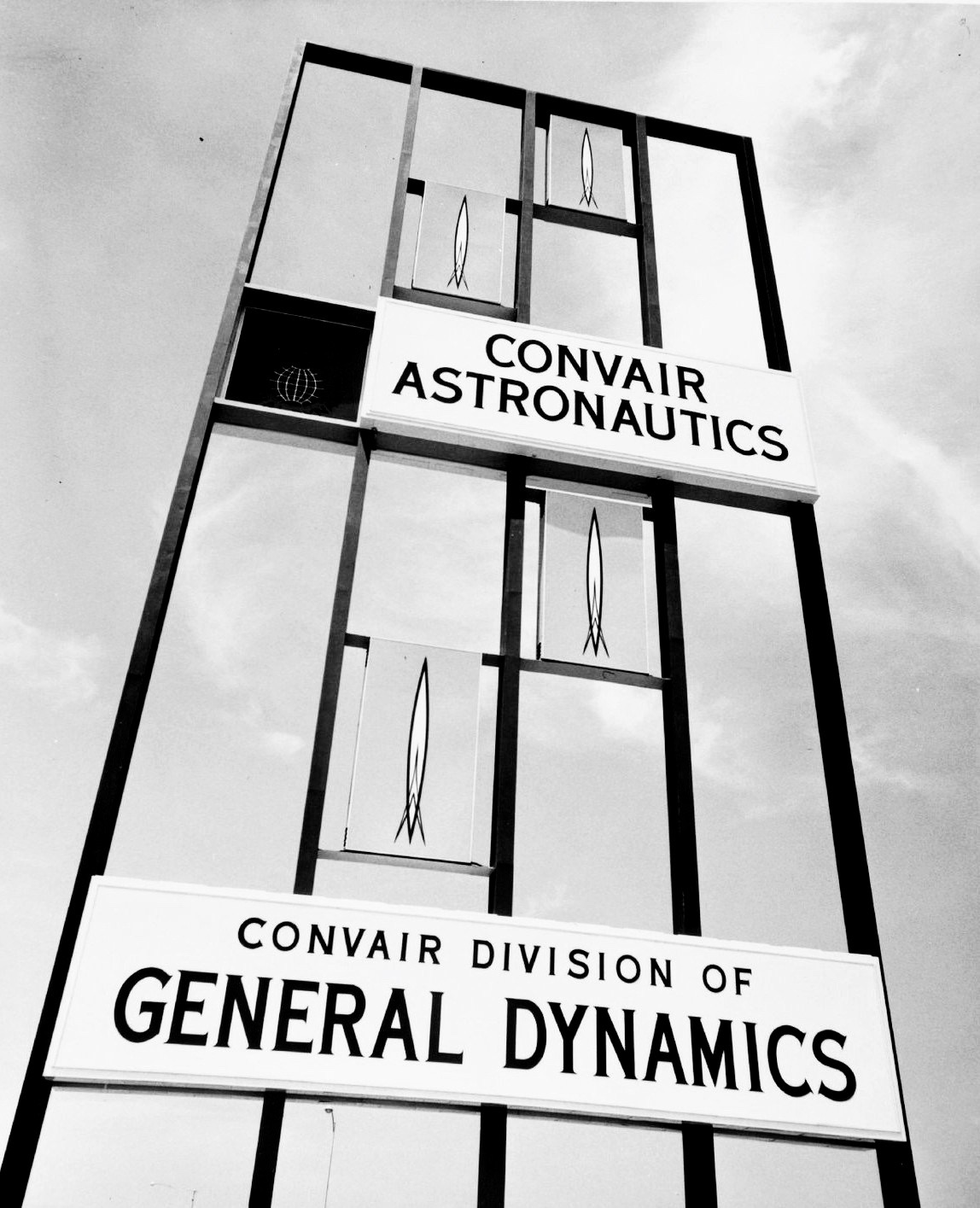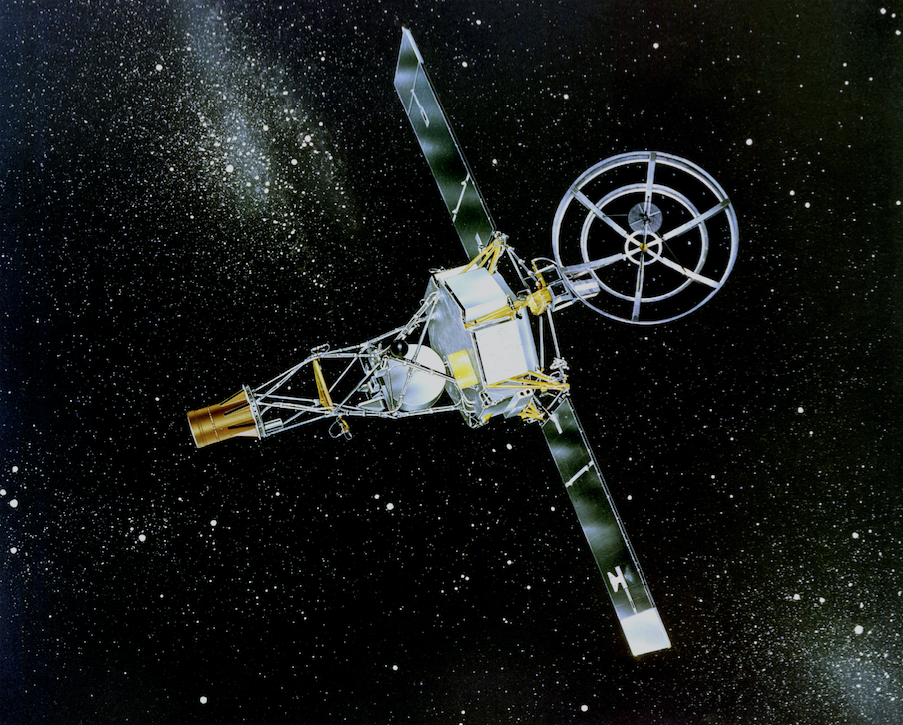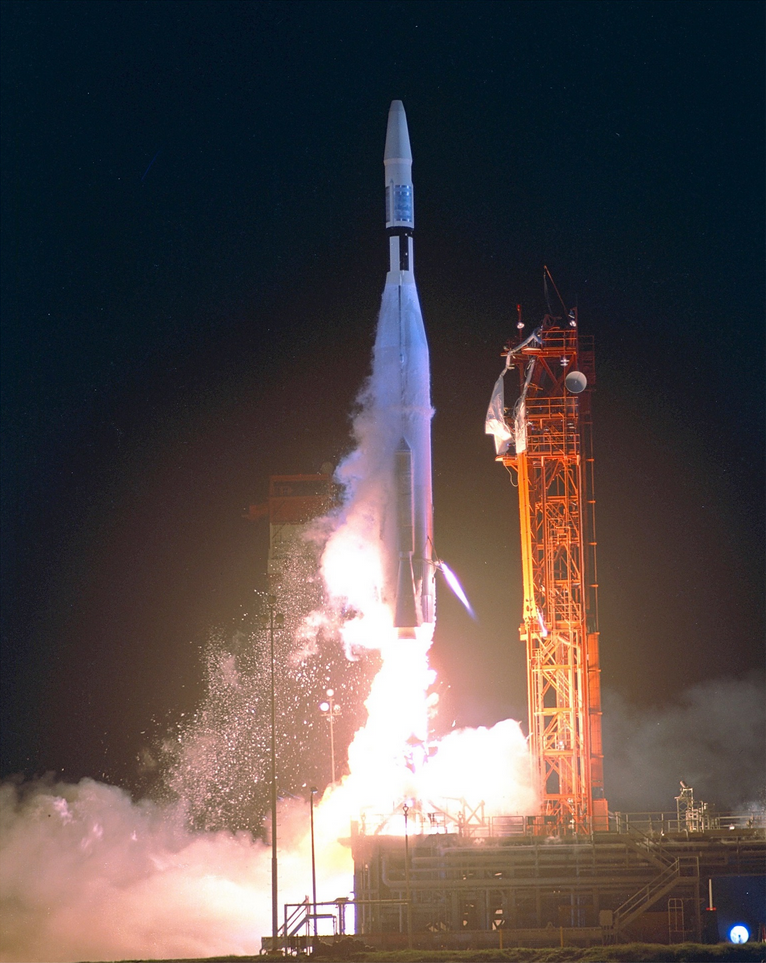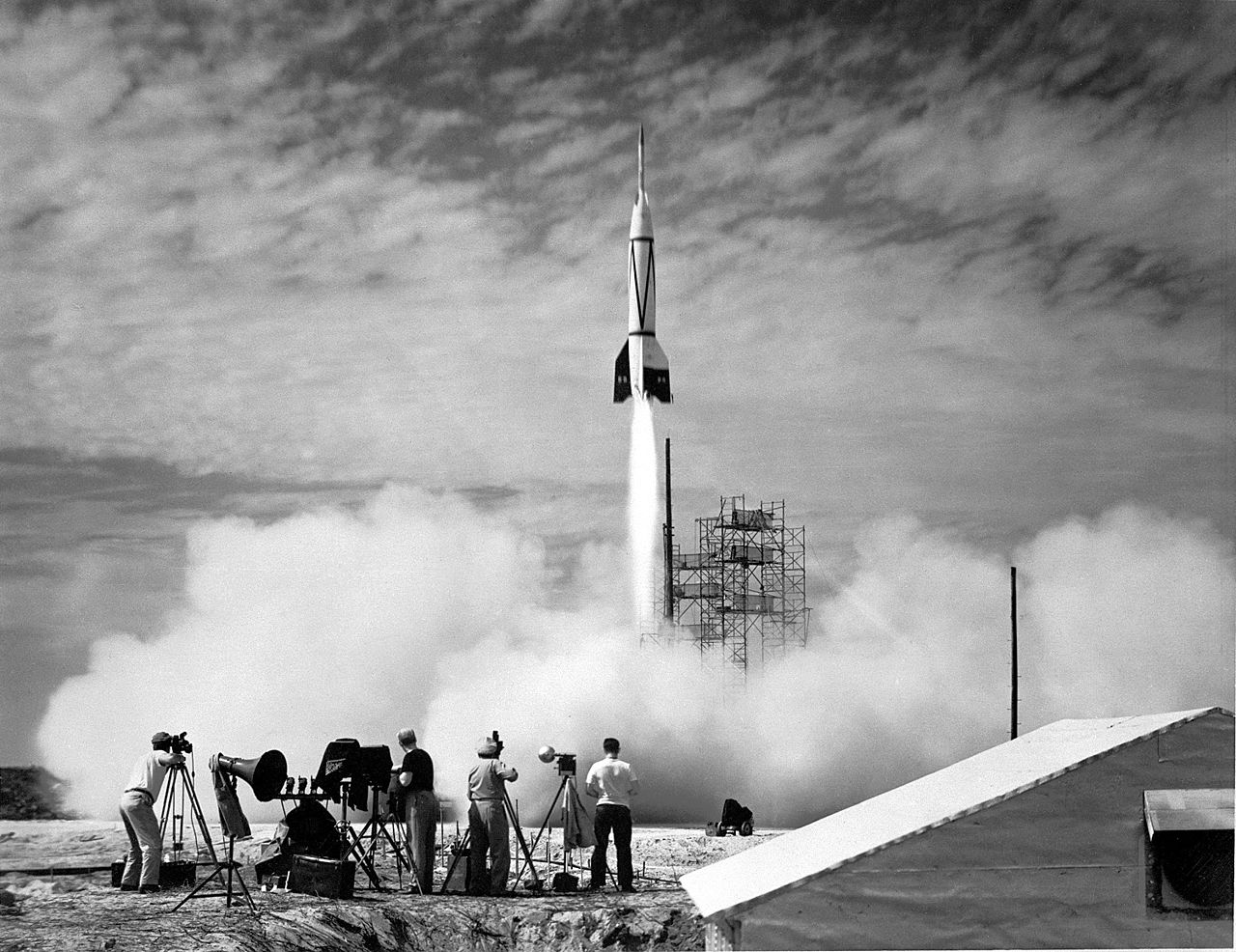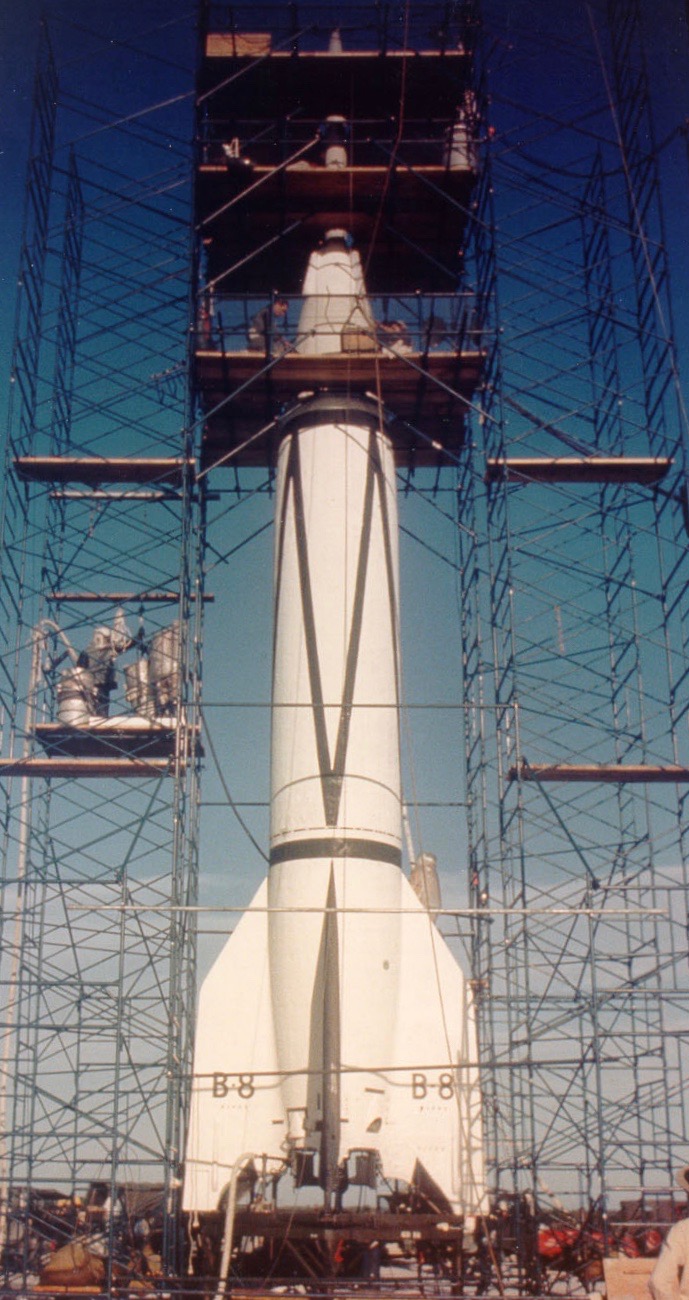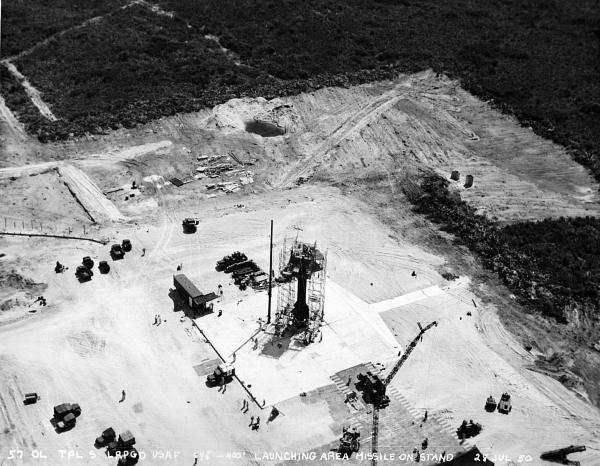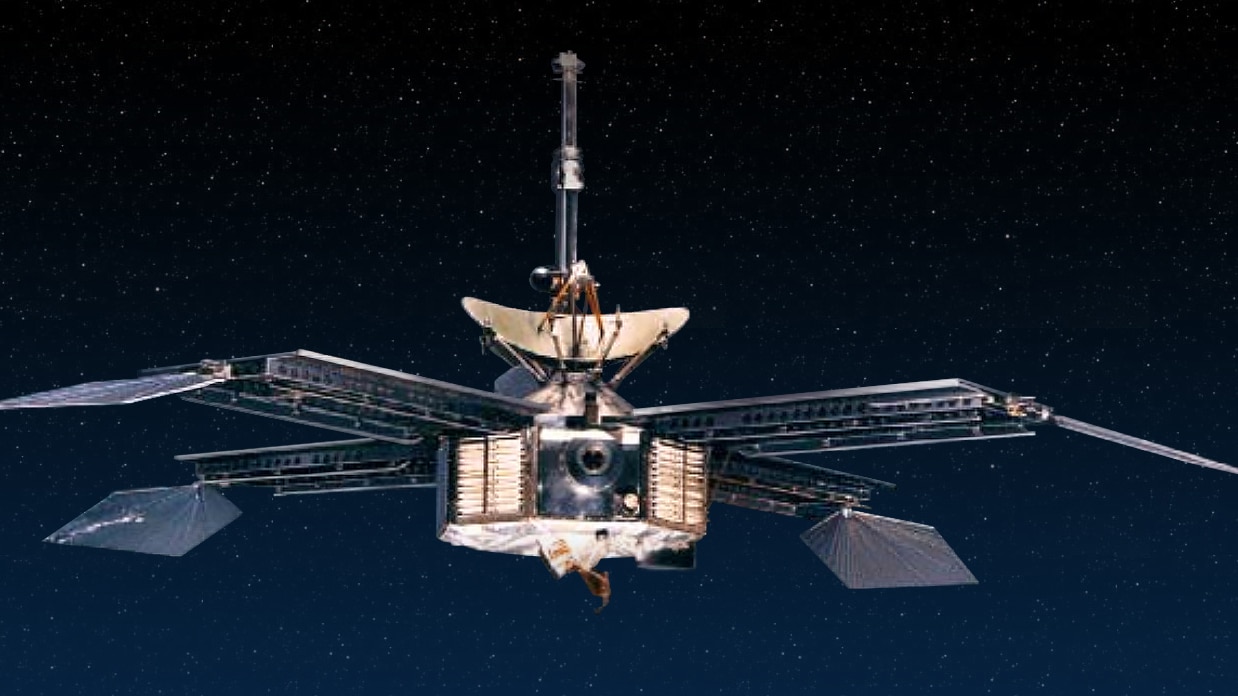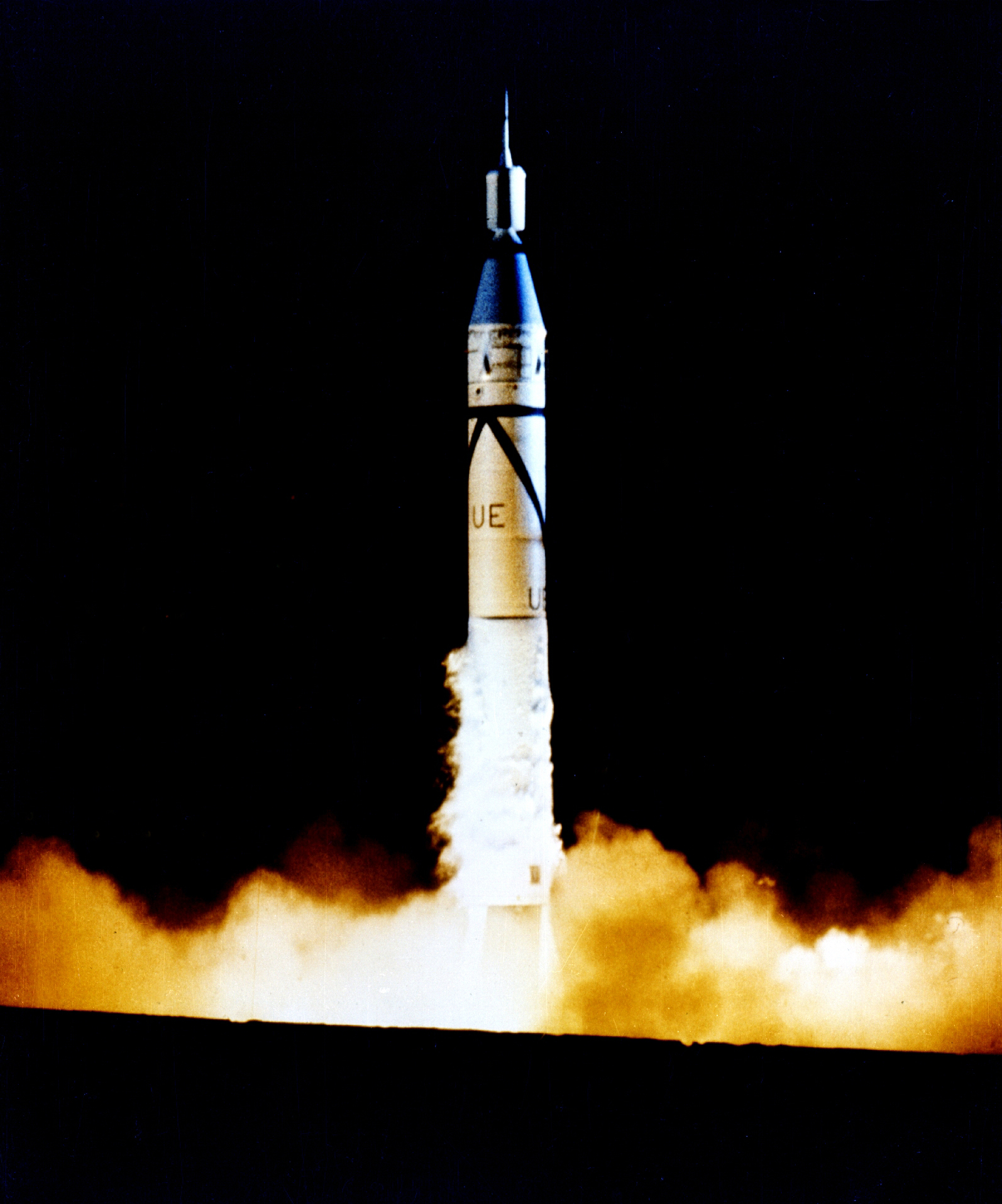
31 January 1958, 10:48 p.m., Eastern Standard Time (1 February 1958, 03:48:00 UTC): The United States of America launched its first successful satellite, Explorer 1, from Launch Complex 26A at the Cape Canaveral Air Force Station, Cape Canaveral, Florida. The satellite entered an orbit with a perigee of 224 miles (360 kilometers) and apogee of 1,575 miles (2,535 kilometers). It completed one orbit every 1 hour, 54.9 minutes.
 Explorer 1 was designed and built by the Jet Propulsion Laboratory (JPL) at the California Institute of Technology, Pasadena, California. The satellite carried a cosmic ray detector, internal and external temperature sensors, and a micrometeorite detector. Powered by batteries, it transmitted data for 105 days.
Explorer 1 was designed and built by the Jet Propulsion Laboratory (JPL) at the California Institute of Technology, Pasadena, California. The satellite carried a cosmic ray detector, internal and external temperature sensors, and a micrometeorite detector. Powered by batteries, it transmitted data for 105 days.
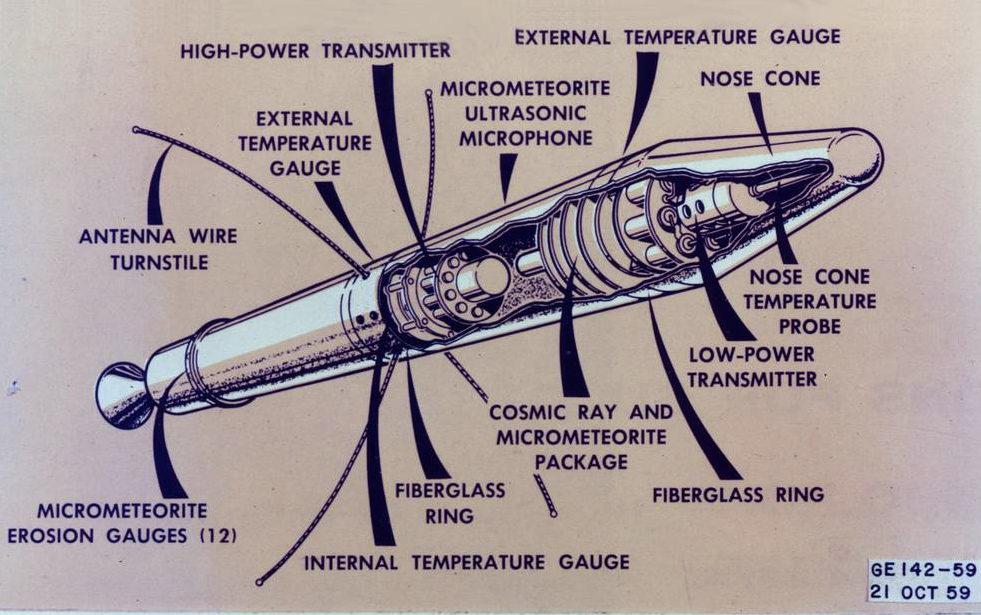
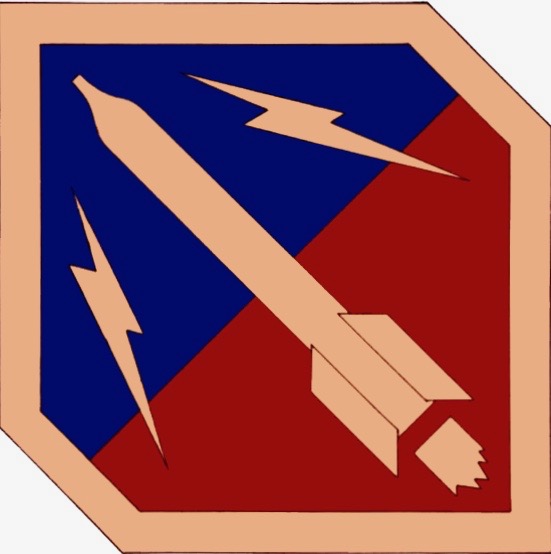 The satellite was launched aboard a Juno-1 four-stage liquid-fueled rocket, produced by the U.S. Army Ballistic Missile Agency (ABMA). The Juno satellite launch vehicle was developed from the Jupiter-C intermediate range ballistic missile, and externally appears virtually identical. The complete Explorer 1/Juno-1 was 71.25 feet (21.72 meters) tall and weighed 64,080 pounds (29,066 kilograms) at launch.
The satellite was launched aboard a Juno-1 four-stage liquid-fueled rocket, produced by the U.S. Army Ballistic Missile Agency (ABMA). The Juno satellite launch vehicle was developed from the Jupiter-C intermediate range ballistic missile, and externally appears virtually identical. The complete Explorer 1/Juno-1 was 71.25 feet (21.72 meters) tall and weighed 64,080 pounds (29,066 kilograms) at launch.
The Juno-1 first stage was 69 feet, 8 inches (21.234 meters) long and 5 feet, 10 inches (1.778 meters) in diameter. Four stabilizing fins had a maximum span of 12 feet, 8 inches (3.861 meters). The engine was a Rocketdyne A-7, which burned a combination of Hydyne and liquid oxygen. The A-7 was rated at 83,000 pounds of thrust (369.20 kilonewtons) and burned for 2 minutes, 35 seconds.
The second stage consisted of a cluster of 11 JPL “Baby Sergeant” solid-rocket boosters, producing a total of 16,500 pounds of thrust (73.40 kilonewtons) and burned for 6.5 seconds. These were scaled-down version of the Thiokol XM100 Sergeant booster. They were 3 feet, 10 inches (1.168 meters) long and 6.00 inches (15.24 centimeters) in diameter. Each booster contained 50 pounds ( kilograms) of solid fuel. The second stage weighed 1,020 pounds (463 kilograms).
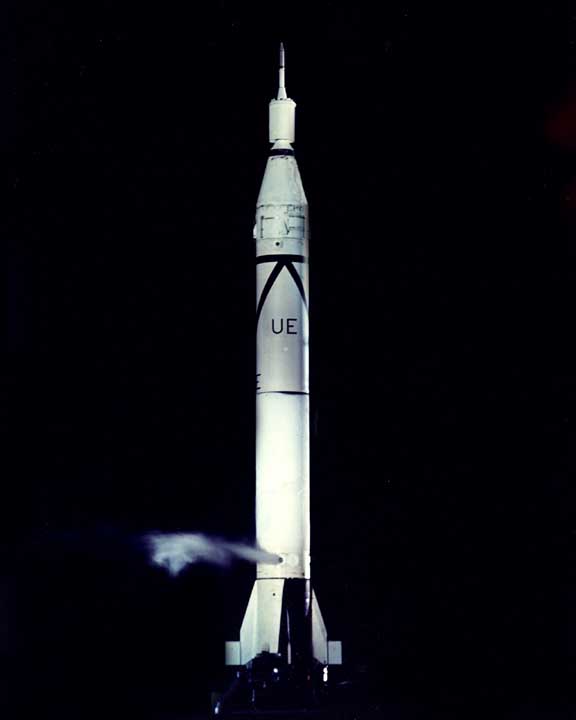
The third stage was powered by three Baby Sergeant boosters, producing 4,500 pounds of thrust (20.02 kilonewtons). These were clustered inside the second stage boosters, and both the second and third stage were covered by a fiberglass “tub” which could be spun up to 750 r.p.m. to stabilize the rocket after launch. The third stage weighed 280 pounds (127 kilograms).
The fourth stage consisted of the Explorer satellite and a single Baby Sergeant booster. The booster remained attached to the satellite in orbit. The Explorer 1 satellite was 2 feet, 6.75 inches (0.781 meters) long, and 6.50 inches (16.51 centimeters) in diameter. It weighed 30.66 pounds (13.91 kilograms). Including its booster, the fourth stage was 6 feet, 8.75 inches (2.051 meters) long and weighed 80 pounds (36 kilograms). The fourth stage booster produced 1,500 pounds of thrust (6.67 kilonewtons) for 6.5 seconds. This gave the Explorer 1 an orbital velocity of approximately 18,000 miles per hour (28,968 kilometers per hour).
Explorer 1 remained in orbit for 12 years, 2 months and 1 day. On 31 March 1970, its orbit decayed and the satellite re-entered Earth’s atmosphere over the Pacific Ocean and was destroyed.
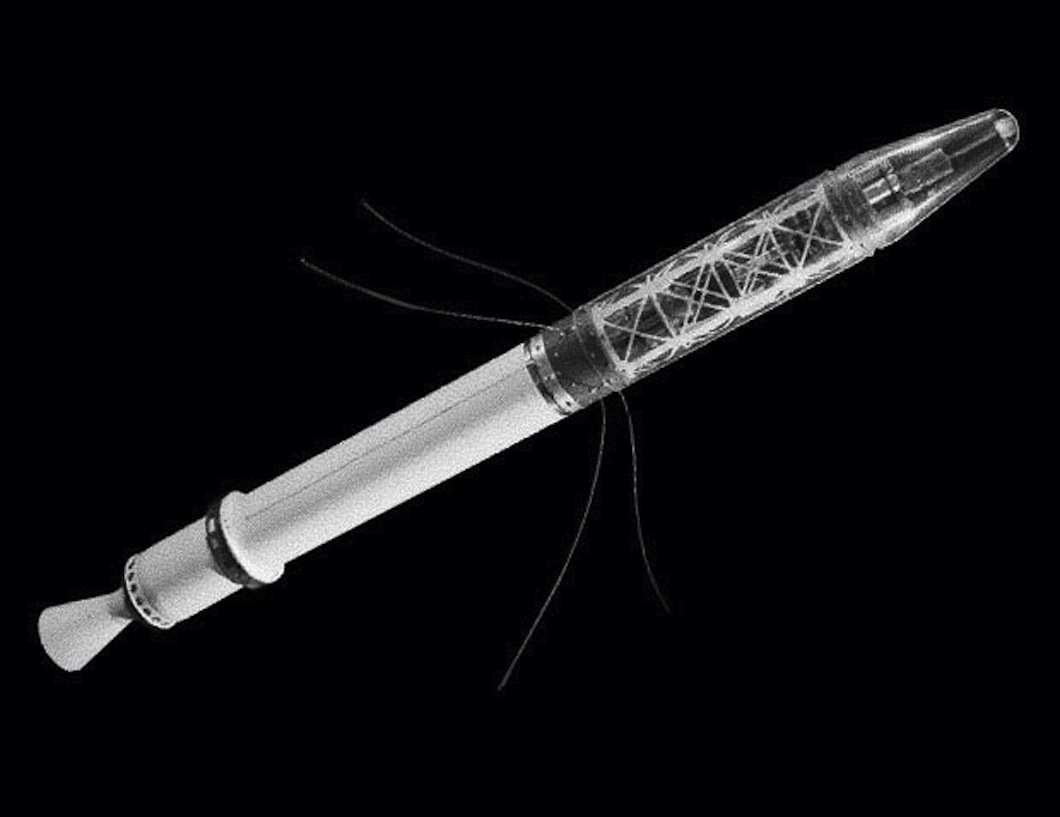
© 2019, Bryan R. Swopes
